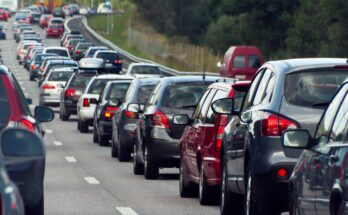In today’s rapidly urbanizing world, the safety and well-being of pedestrians should be at the forefront of every city planner’s mind. Our communities deserve spaces that honor the environment and protect and prioritize pedestrians.
Let’s look at how cities can make streets safer for pedestrians and ensure that our streets are accessible and inclusive for all.
Prioritize Pedestrian Infrastructure
One of the most effective ways to make streets safer for pedestrians is by prioritizing pedestrian infrastructure in urban planning. This infrastructure includes implementing safe and well-maintained sidewalks, crosswalks, traffic signals, and pedestrian-oriented design elements such as curb extensions, medians, and refuge islands.
In addition, cities can also consider implementing traffic calming measures such as speed bumps or reduced speed limits to decrease the risk of accidents between pedestrians and vehicles. Focusing on the signs a manhole cover needs replacing or the indications that a curb ramp needs an upgrade can also greatly improve pedestrian safety and accessibility.
Educate Drivers on Pedestrian Rights
It’s not just about having the physical infrastructure. Drivers must also receive education on pedestrian rights and responsibilities. This teaching can include implementing driver education programs and awareness campaigns to educate the public on the importance of yielding to pedestrians, following speed limits, and being mindful of their surroundings while driving.
Additionally, cities can increase enforcement of traffic laws related to pedestrian safety, such as issuing tickets for failing to yield or speeding in designated pedestrian areas. These measures can help instill a culture of respect and caution among drivers and ultimately make pedestrians safer.
Encourage Active Transportation
Encouraging active transportation, such as walking or biking, promotes healthy living and reduces the number of vehicles on the road, making it safer for pedestrians. Cities can support active transportation by creating designated bike lanes and pedestrian paths, implementing bike-sharing programs, and providing secure bicycle parking. By promoting and facilitating active transportation, cities can decrease the risk of accidents between vehicles and pedestrians.
Continuously Evaluate and Improve
Making streets safer for pedestrians is an ongoing process that requires continuous evaluation and improvement. Cities should regularly assess their pedestrian infrastructure, educate drivers on safety rules, and encourage active transportation to identify areas for improvement. This assessment can include conducting pedestrian safety audits, collecting data on pedestrian accidents, and seeking input from local communities. By continuously evaluating and improving, cities can ensure that their streets remain safe and accessible for all individuals.
Creating safe streets for pedestrians requires a multifaceted approach that involves prioritizing infrastructure, educating drivers, promoting active transportation, and continuously assessing and improving. By adopting this approach, cities can demonstrate their commitment to the well-being of their communities and create safer, more inclusive spaces for all individuals.



